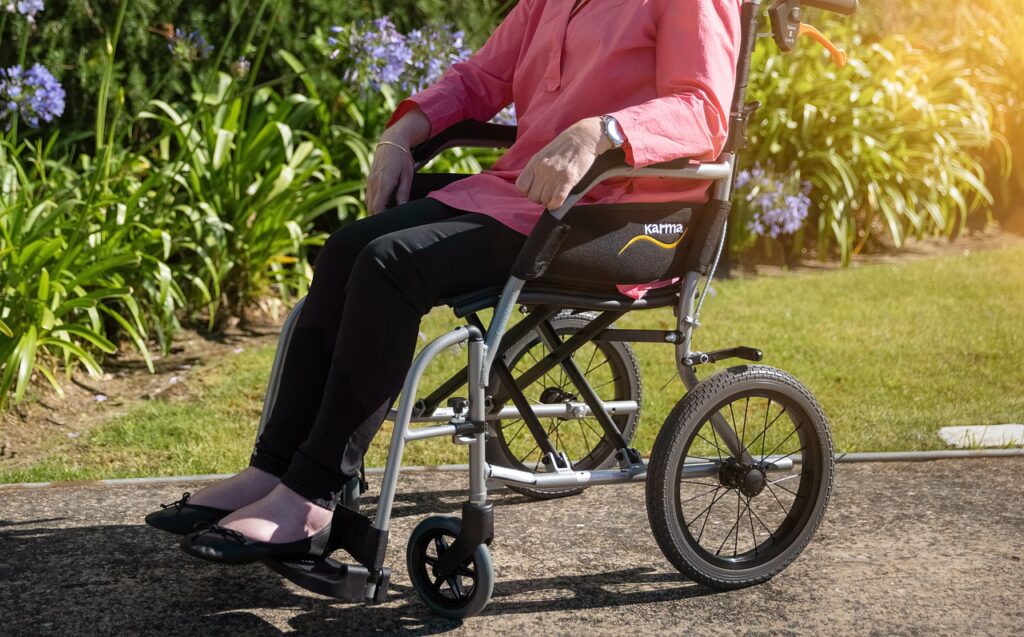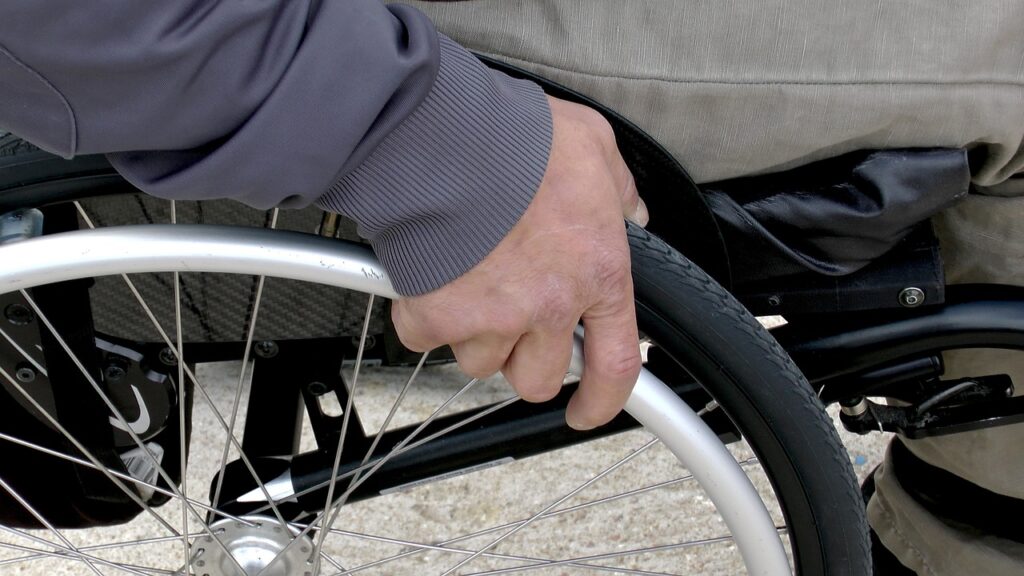Introduction
Proper wheelchair positioning is crucial for older adults, ensuring their comfort, safety, and overall well-being. For caregivers and occupational therapists, understanding this aspect of care can significantly enhance the quality of life for those reliant on wheelchairs.
Understanding Wheelchair Positioning

Definition and Significance
Wheelchair positioning refers to the strategic placement and adjustment of a wheelchair user to promote optimal posture, comfort, and functionality. Proper wheelchair positioning can have a profound impact on daily activities and overall health, reducing the risk of pressure sores, improving respiration, and enhancing mobility.
Impact on Daily Activities and Overall Health
Incorrect wheelchair positioning can lead to a range of problems, including discomfort, limited mobility, falls, and even severe health issues such as pressure ulcers and respiratory difficulties. Conversely, ideal wheelchair positioning can help older adults engage in daily activities with greater ease and independence.
Key Principles of Wheelchair Seating and Positioning
Balance and Stability
Achieving balance and stability in wheelchair seating and positioning is essential to prevent falls and injuries. A stable seating base helps maintain an upright posture, which is critical for performing various activities of daily living.
Pressure Relief and Skin Integrity
One of the primary goals of wheelchair positioning is to distribute pressure evenly across the body. This prevents the development of pressure sores, ensuring skin integrity. Implementing appropriate cushions and other support devices can aid in pressure relief.
Posture and Comfort
Good posture is vital for comfort and overall health. Proper wheelchair positioning supports the spine’s natural curves, reducing pain and discomfort. Ergonomically designed seating systems can significantly enhance comfort for long periods.
Evaluating Wheelchair Positioning Needs

Assessment by Caregivers and Professionals
Assessing a patient’s wheelchair positioning needs requires a comprehensive evaluation by caregivers and occupational therapists. This includes examining their physical condition, mobility levels, and specific health concerns. Regular assessments ensure that the chosen solutions remain effective over time.
Implementing Effective Strategies
Choosing the Right Wheelchair
Selecting the appropriate wheelchair is the first step in ensuring proper positioning. Factors to consider include the user’s body size, weight, and specific mobility requirements. Advanced models offer customizable features that can be adjusted to meet individual needs. It is important to measure the individual in order to choose the appropriate wheelchair and cushion.
Adjusting Seating and Positioning
Once the right wheelchair is chosen, it’s important to fine-tune the seating and positioning. This involves adjusting the seat height, depth, backrest angle, and footrest position. Occupational therapists can provide valuable guidance on making these adjustments.
Special Considerations
Consider if the patient will need a standard wheelchair, high back wheelchair, reclining wheelchair, bariatric wheelchair, power wheelchair or scooter. After the individual is appropriately assessed for a wheelchair, monitor the individual in the wheelchair often in order to make sure the individual is safe and comfortable. Assure the cushion you choose is the correct thickness, width and height. For example, for some individuals a two-inch height is appropriate, however for others it may create a fall risk or increase the seated height where the individual is no longer anatomically aligned. If an individual is at high risk for falls, a wedge cushion or pommel cushion may be appropriate. For other individuals with sacral wounds, it may be appropriate to provide a pressure relief cushion depending on the stage of the wound.
Daily Care and Maintenance
Regular Checks and Adjustments
Regularly checking and adjusting the wheelchair’s components is crucial for maintaining optimal positioning. Routine inspections help identify wear and tear, ensuring the equipment remains in good working order.
Tips for Caregivers
Caregivers play a vital role in sustaining proper wheelchair positioning. Simple practices like repositioning the user periodically, ensuring the cushions remain in place, and monitoring for signs of discomfort can make a significant difference.
Conclusion
Proper wheelchair positioning for older adults cannot be overstated. It is a critical aspect of care that enhances comfort, prevents health issues, and promotes independence. Caregivers and professionals must prioritize this to improve the quality of life for wheelchair users. By focusing on proper wheelchair positioning, we can ensure older adults live with dignity, comfort, and mobility.
FAQs
How often should wheelchair positioning be reassessed?
It’s recommended to reassess wheelchair positioning quarterly or whenever there are changes in the user’s health or comfort levels.
What signs indicate poor wheelchair positioning?
Common signs include discomfort, pressure sores, poor posture, and difficulty performing daily activities.
Can improper wheelchair positioning lead to health issues?
Yes, improper positioning can cause pressure sores, respiratory problems, falls and musculoskeletal pain.
Who should be involved in the wheelchair positioning process?
The process should involve caregivers, occupational therapists, and the wheelchair user to ensure comfort and effectiveness.
By focusing on these strategies and staying informed, caregivers and professionals can make a meaningful difference in the lives of older adults who rely on wheelchairs for their daily activities.
References:
- Smith, J., & Brown, L. (2021). The Importance of Wheelchair Positioning in Elderly Care. Journal of Geriatric Care, 35(2), 45-58.
- Thompson, A. (2020). Advanced Techniques in Wheelchair Seating and Positioning. Occupational Therapy Today, 12(10), 33-39.
- National Pressure Ulcer Advisory Panel. (2019). Best Practices for Pressure Ulcer Prevention [PDF].
Recently Featured OT Insider Articles
Managing Lymphedema: The Role of Occupational Therapy
Unlocking Hope: Dementia and Occupational Therapy
Empower Your Journey: Occupational Therapy Meets Yoga
Why Did I Choose OT? A Profession with a Purpose
Empowering Recovery: The Significance of Occupational Therapy in ICU Settings
Enhancing OT Practices: The Power of Kinesiology Tape in OT
Top 10 Things to Consider for Choosing the Right Occupational Therapy School
Exploring the World of Travel Occupational Therapy: Opportunities and Impact
